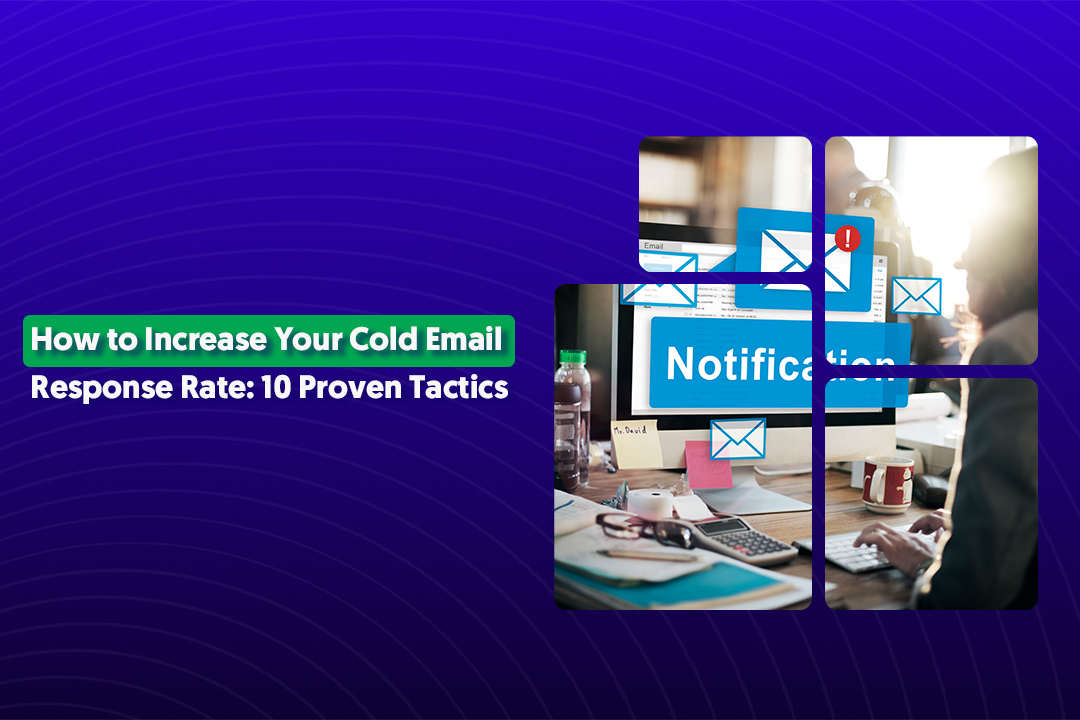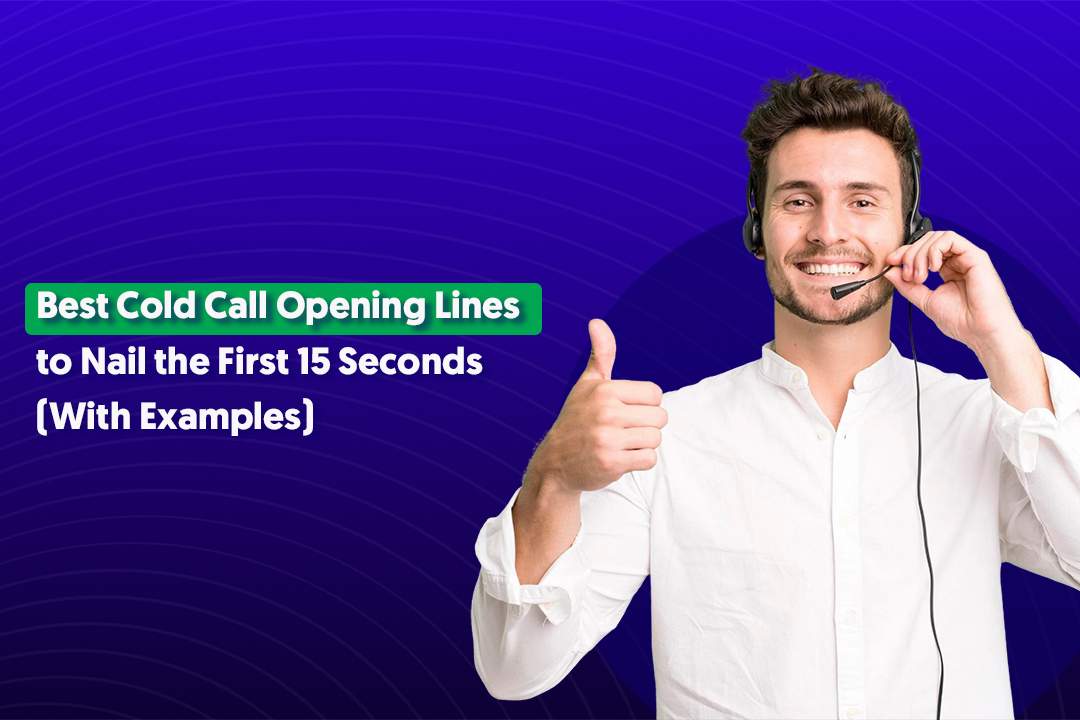Table of Content
Key Takeaways
- A quality lead list beats a big list every time—focus on ICP fit and verified contacts, not volume.
- Define your ICP first (job titles, company size, industry, triggers) before adding anyone to your cold email list.
- Always verify emails before sending—high bounce rates destroy your sender reputation and deliverability.
- Enrich your email leads list with firmographics and intent signals to segment and personalize effectively.
- Refresh your lead lists every 60-90 days to account for job changes and stale data.
- Prioritize contacts with intent signals like funding, hiring, or leadership changes—they're 3-5x more likely to respond.
- Deliverability is everything—warm up domains, send only to verified addresses, and monitor sender reputation closely.
Your cold email list matters more than your subject line, your pitch, or even your offer.
We've seen it happen countless times. Someone sends out 10,000 emails and gets crickets. Another person sends 500 and books 20 meetings.
The difference? List quality.
A massive email leads list full of outdated contacts and wrong titles will tank your email deliverability and waste your time.
But a quality lead list of people who actually match your ideal customer profile? That's where the magic happens.
When you build your list the right way, you get:
- Emails that actually land in inboxes (not spam folders)
- People who open and respond because they're relevant
- Conversations that turn into real opportunities
The size of your list doesn't matter if nobody's reading your emails. What matters is having the right people on that list—people who have the problem you solve and the authority to do something about it.
Let's walk through exactly how to build a cold email list that actually works.
What Makes a "Quality" Cold Email List (vs Just a "Big" List)
When doing cold email lead generation you must remember - A quality lead list isn't about how many contacts you have—it's about how well those contacts match what you're looking for.
Here's what actually defines quality:
- Relevance to your ICP: Every person on your list should fit your ideal customer profile. Right industry, right company size, right job title. If they're not a fit, they shouldn't be on your list.
- Verified and up-to-date data: Email addresses that actually work, phone numbers that connect, job titles that are current. Outdated data is just dead weight.
- Deliverability-ready contacts: Valid email formats, active domains, no spam traps. Your emails need to actually reach inboxes.
- Compliance-friendly: Lists built through proper channels (not scraped from random sources) that respect data privacy laws like GDPR and CAN-SPAM.
Why Poor List Quality Destroys Your Campaigns
Send emails to a low-quality email leads list, and here's what happens:
- High bounce rates (over 5%) signal to email providers that you're a spammer.
- Your sender reputation tanks, making future emails go straight to spam.
- You waste time reaching out to people who left the company six months ago.
- Your conversion rates stay in the basement because you're talking to the wrong people
Metrics That Actually Matter
When evaluating your lead lists, watch these numbers:
- Bounce rate: Should be under 3%. Anything higher means your data is stale.
- Email verification score: Aim for 95%+ verified contacts.
- ICP fit score: How well does each contact match your ideal buyer?
- Engagement rate: Opens and replies tell you if you're reaching real, interested people
A big list with a 15% bounce rate will hurt you more than help you. A smaller quality lead list with verified contacts will actually get you meetings.
Learn More: Cold Email Prospecting Strategy That Gets 40%+ Reply Rates
Step-By-Step Process to Build a High-Quality Cold Email List
Building a strong email leads list isn't complicated, but it does require a process. Here's exactly how we do it.
Define Your Ideal Customer Profile (ICP)
Before you add a single contact to your cold email list, get crystal clear on who you're targeting.
Map out these details:
- Job titles: Are you reaching VPs, directors, or founders? Be specific.
- Company size: Employee count and revenue range that matches your sweet spot.
- Industry: Which verticals actually buy what you're selling?
- Geography: Location matters for compliance, time zones, and relevance.
- Trigger events: Recent funding, leadership changes, tech stack updates—signals that timing is right.
Tools that help: LinkedIn Sales Navigator lets you filter by all of these. Data enrichment tools like Clearbit or Apollo can fill in the gaps.
The tighter your ICP, the better your quality lead list becomes. Don't skip this step.
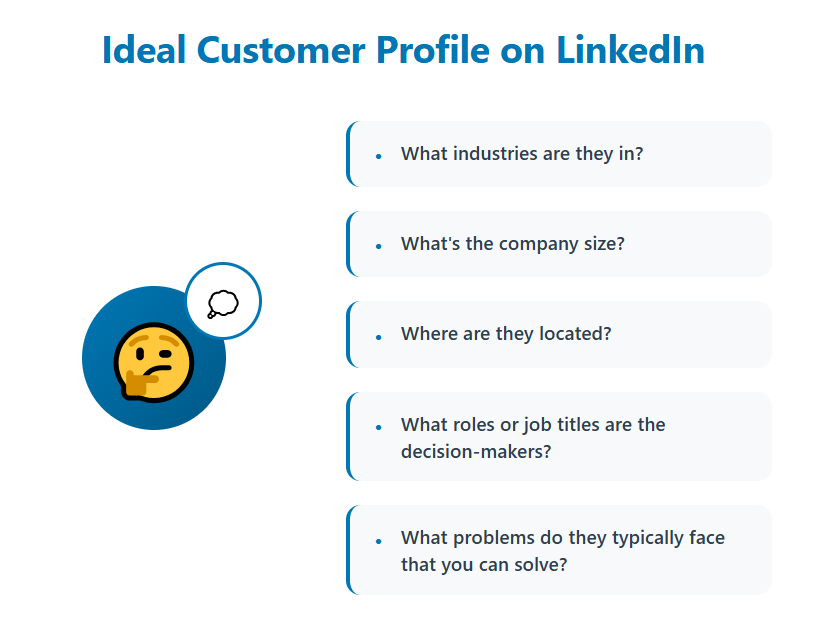
Source Contact Data & Build the Raw List
Now that you know who you're looking for, it's time to find them.
Where to source contacts:
- B2B databases: Apollo, ZoomInfo, Lusha, and Hunter.io give you searchable contact data.
- LinkedIn: Search by your ICP filters, then extract contact info (manually or with tools).
- Industry directories: Trade associations and professional groups publish member lists.
- Website visitor tools: Clearbit Reveal or Koala show you companies checking out your site.
Free vs paid methods:
Free options (LinkedIn manual search, free email leads list tools) work but take forever and give you limited data.
Paid databases save time and give you verified contacts with enrichment already built in. If you're serious about scale, paid is worth it.
Start building your raw list with broad strokes. You'll refine it in the next steps.
Enrich & Add Contextual Data
A name and email address isn't enough. You need context to personalize and prioritize.
Why data enrichment matters: It adds firmographics (company revenue, employee count), technographics (what tools they use), and intent signals (recent activity that shows buying interest).
This lets you segment your b2b email lists for lead generation intelligently instead of blasting everyone the same message.
What to enrich:
- Company details (size, industry, funding stage)
- Technology stack (CRM, marketing tools, etc.)
- Recent news or trigger events
- Social profiles and engagement history
How to do it: Tools like Clearbit, Apollo, or Clay can automatically enrich your lead lists by pulling in data from multiple sources. You upload your raw list, and they fill in the blanks.
Enriched data = smarter segmentation = better results.
Explore More: Best AI Lead Qualification Tools for Faster B2B Conversions

Verify Emails & Cleanse the List
This is non-negotiable. Sending emails to unverified emails destroys your sender reputation and gets you blacklisted.
Why verification matters: Invalid emails cause bounces. High bounce rates (over 5%) tell email providers you're spamming. Once your domain gets flagged, even good emails go to spam.
The workflow:
- Export your email leads list
- Run it through an email verification tool (NeverBounce, ZeroBounce, Bouncer)
- Remove invalid, risky, and catch-all addresses
- Update your list with verified contacts only
Check for duplicates, formatting errors, and obvious fakes (like test@company.com) while you're at it.
A clean, verified cold email list is the foundation of good deliverability. Don't skip this step just because it takes time.
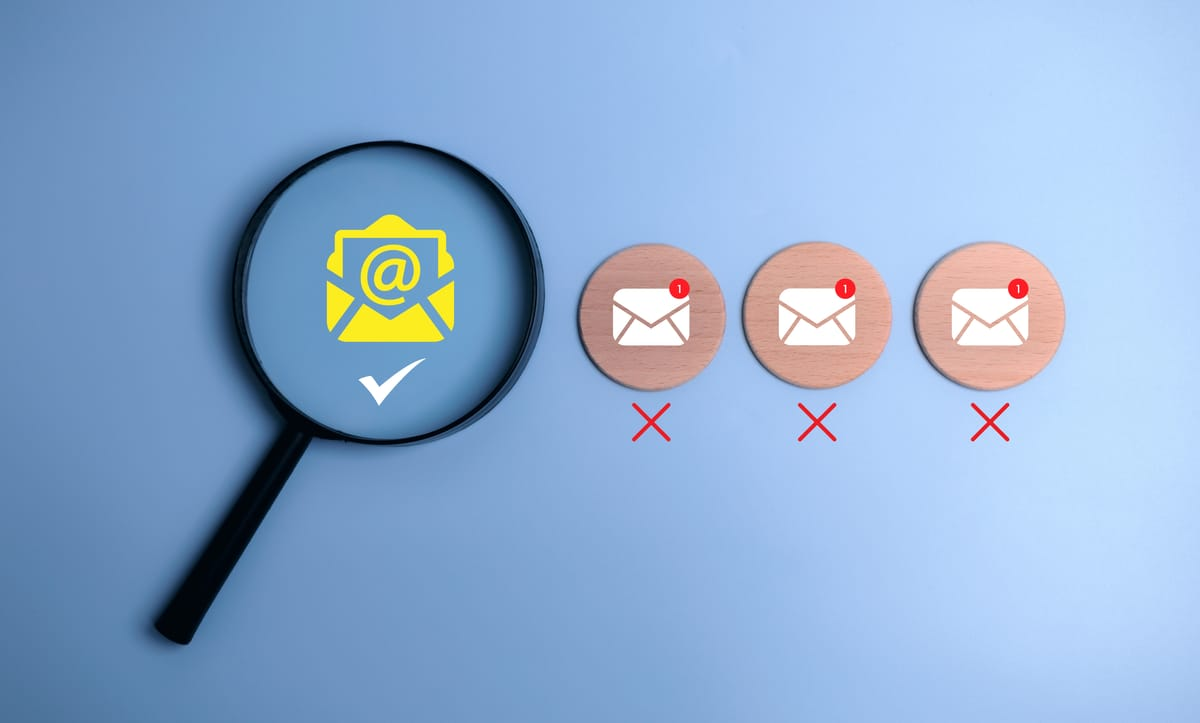
More to Explore: Top Email Warm-Up Tools to Improve Deliverability
Segment & Prioritize Leads for Outreach
Don't treat every contact the same. Segment your quality lead list so you can tailor your messaging and prioritize high-value prospects.
How to segment:
- By ICP fit: Tier A (perfect match), Tier B (close fit), Tier C (worth a shot).
- By trigger events: Recent funding, new hire, product launch—these get priority.
- By engagement signals: Website visitors, LinkedIn profile viewers, content downloaders.
Each segment gets its own messaging angle. A company that just raised Series A needs a different pitch than one that's been bootstrapped for 10 years.
Prioritize your best-fit segments first. You'll see higher response rates and better conversations right out of the gate.
Maintain & Refresh Your Lead List Regularly
Your email leads list has an expiration date. People change jobs, email addresses get deactivated, and companies evolve.
How lists decay:
- 30% of B2B contacts change jobs annually.
- Email addresses go stale within 6-12 months.
- Company details (size, tech stack, funding) shift constantly.
Set a refresh schedule: Re-verify and update your lead lists every 60-90 days. Remove bounced emails, check for job changes, and add new enrichment data.
Tools like Apollo and ZoomInfo offer auto-refresh features that keep your data current without manual work.
A maintained list stays effective. A neglected list becomes a liability.
Best Practices & Tips to Maximize Cold Email List Performance
You've built your lead lists—now let's make sure they actually perform.
Use Intent Signals to Prioritize
Not all contacts are ready to buy right now. Intent signals tell you who's actually in-market.
Signals that matter:
- Job postings: Hiring for roles related to your solution means they're scaling.
- Funding announcements: Fresh capital = budget for new tools.
- Company expansions: New offices or markets create immediate needs.
- Technology changes: Switching platforms or adding new tools opens doors.
- Leadership changes: New executives often review vendors within their first 90 days
Track these signals in your cold email list and prioritize those contacts. They're 3-5x more likely to respond than someone with no trigger event.
Must Read: Ways to Re-Engage Lost Leads (Templates & Email Sequences)
Respect Opt-Outs and Stay Compliant
This should go without saying, but we'll say it anyway: follow the rules.
What compliance looks like:
- Honor unsubscribe requests immediately (within 10 days per CAN-SPAM).
- Maintain a suppression list of people who've opted out.
- Don't email personal addresses without consent (GDPR requirement).
- Include your physical address and clear unsubscribe link in every email.
- Respect country-specific laws (GDPR in EU, CASL in Canada, etc.).
Bad data practices don't just risk fines—they destroy your reputation. One complaint to an ISP can tank your deliverability for months.
When building b2b email lists for lead generation, stick to business contacts sourced through legitimate channels. Buying scraped lists is a shortcut to the spam folder.

Integrate Your Lists into Your CRM and Automation
Your email leads list needs to flow seamlessly into your workflow.
- CRM integration: Push your verified contacts into your CRM (Salesforce, HubSpot, Pipedrive) so your team can track engagement, book meetings, and close deals. No manual data entry.
- Automation setup: Connect your list to your outreach tool (Lemlist, Instantly, Smartlead) to trigger sequences based on segments. Different messages for different ICP tiers.
- Lead scoring: Assign scores based on ICP fit, intent signals, and engagement. Focus your team's time on high-score leads first.
The better your integration, the faster you move from contact to conversation.
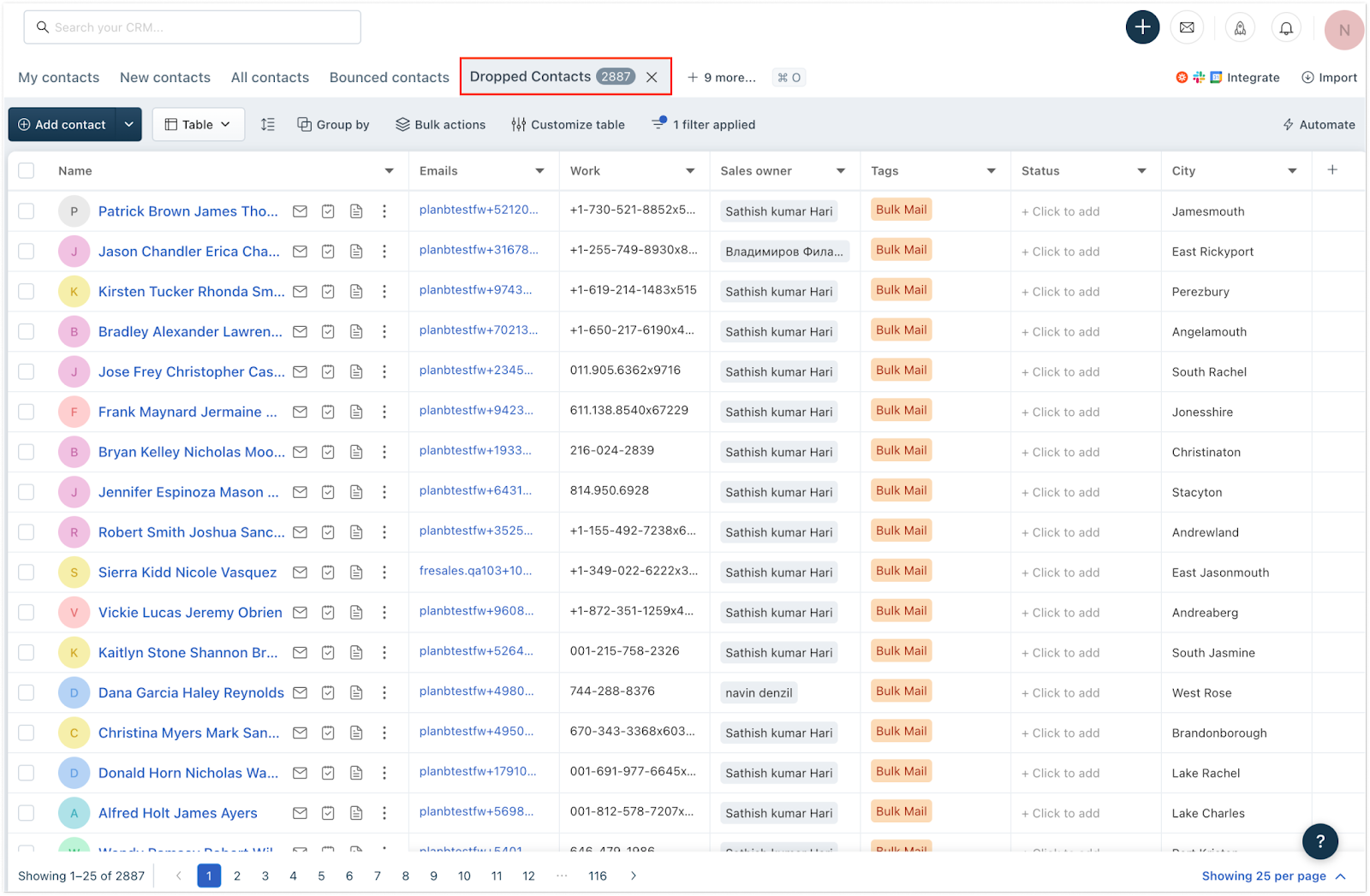
Prioritize Deliverability Above Everything
None of this matters if your emails don't land in inboxes.
Deliverability essentials:
- Only send to verified addresses: Run every quality lead list through verification before loading it into your sending tool. Bounces kill your sender reputation fast.
- Warm up your domain and email accounts: Don't go from zero to 500 emails a day. Gradually increase volume over 2-4 weeks to build trust with email providers.
- Monitor your sender reputation: Use tools like Google Postmaster, Microsoft SNDS, or Sender Score to track how ISPs view your domain.
- Keep engagement high: Email providers watch open rates, reply rates, and spam complaints. Low engagement = spam folder. High engagement = inbox placement.
- Rotate sending accounts: Don't send everything from one email address. Spread volume across multiple accounts to reduce risk.
Your lead lists can be perfect, but if your deliverability is broken, you're just shouting into the void. Protect your sender reputation like it's your most valuable asset—because it is.
How a Cold Email Outreach Agency Uses Cold Email Lists to Drive Results
Here's the reality: building a cold email list that actually converts takes time, expertise, and constant optimization. Most companies either don't have the bandwidth or end up learning expensive lessons along the way.
That's exactly why businesses partner with a cold email outreach agency like Cleverly.
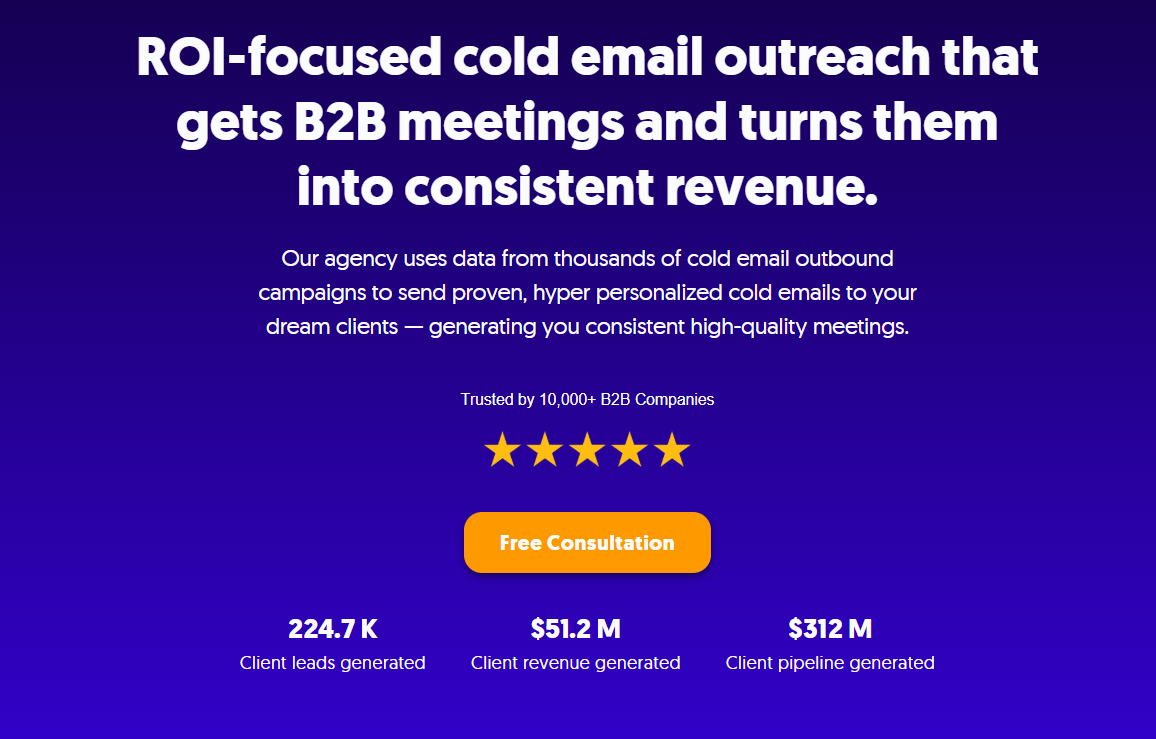
We've Built This Into a Science
Over the past few years, we've helped 10,000+ clients generate leads with some of the biggest names out there—Amazon, Google, Uber, PayPal, Slack, and Spotify. The results speak for themselves:
- $312 million in pipeline revenue generated
- $51.2 million in closed revenue delivered
We didn't get there by buying random email leads lists and hoping for the best. We got there by doing exactly what we covered in this guide—and then doing it at scale, every single day.
How We Handle Cold Email Lists Differently
When you work with us, here's what happens behind the scenes:
- We build your list from scratch.
- We enrich with intent signals.
- We verify ruthlessly.
- We handle the entire outreach process.
- We segment intelligently
The Part That Actually Matters: Our Pricing Model
Here's where we're different from most agencies.
We operate on a pay-per-meeting-ready-lead model. That means you only pay for qualified leads we send over to you—not for list size, not for email volume, not for vague "outreach efforts."
No bloated lead lists full of unqualified prospects. No paying for activity that doesn't move the needle.

Why Companies Choose to Outsource
Building and managing cold email lists in-house means:
- Hiring a dedicated researcher or SDR ($60K-$80K annually).
- Paying for multiple tools (databases, verifiers, enrichment, CRM—easily $500-$1,000/month).
- Spending months learning what works through trial and error.
- Risking your domain reputation with mistakes along the way.
Or you partner with an agency that's already done this 10,000+ times, knows what works, and only charges you for actual results.
Ready to Build a Cold Email List That Actually Books Meetings?
If you're tired of cold email campaigns that go nowhere, or if you just don't have the time to build and manage lists the right way..let's talk!
That's how a cold email outreach agency turns a cold email list into actual revenue.

Conclusion
Building a cold email list that actually works isn't about finding the biggest free email leads list you can download. It's about doing the work—defining your ICP, sourcing verified contacts, enriching with context, and maintaining quality over time.
The companies seeing real results from cold email aren't the ones with 50,000 random contacts. They're the ones with 500 right contacts who actually fit what they're selling.
Follow the process we laid out here:
- Start with a tight ICP
- Source from legitimate channels
- Verify religiously
- Segment strategically
- Keep your list fresh
Do that, and your cold email list becomes your most valuable sales asset. Skip steps, and you're just another sender heading straight to spam.
The choice is yours: build it right, or keep wondering why nobody's responding.
If you'd rather hand this off to people who've done it 10,000+ times, we're here. But either way—stop treating your list like a numbers game. Quality wins every time.
Frequently Asked Questions



